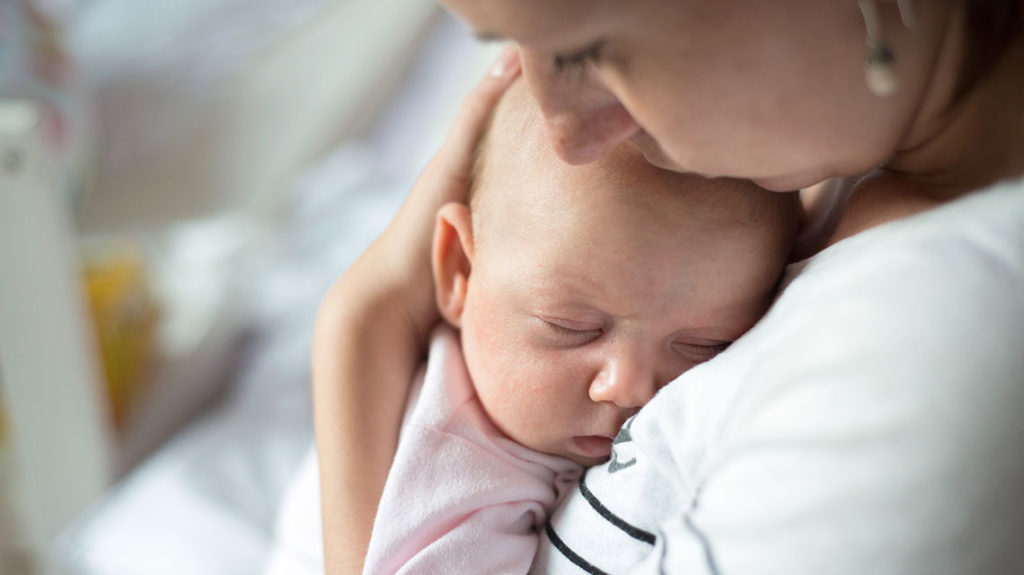Systems Analyses Unravel Clinical Phenotypes in Infants with Respiratory Syncytial Virus Infection
Systems Analyses Unravel Clinical Phenotypes in Infants with Respiratory Syncytial Virus Infection https://pediatricsnationwide.org/wp-content/uploads/2021/03/AdobeStock_109625528-1-1024x575.jpg 1024 575 Mary Bates, PhD Mary Bates, PhD https://secure.gravatar.com/avatar/c6233ca2b7754ab7c4c820e14eb518c8?s=96&d=mm&r=g- April 30, 2020
- Mary Bates, PhD

RSV disease severity is influenced by innate immune responses, viral loads and patient age.
Respiratory syncytial virus (RSV) is a leading cause of hospitalization in children, although most cases result in mild disease. To develop effective antivirals and vaccines, a better understanding of the different clinical, immunologic and virologic factors present in infants with mild versus severe RSV disease is necessary.
In a new study funded by the National Institute of Allergy and Infectious Diseases, part of the National Institutes of Health, researchers at Nationwide Children’s Hospital sought to identify a “safe and protective” immunoprofile induced by natural RSV infection that protects infants from developing severe disease. Using a systems analysis approach, the researchers integrated blood transcriptional profiling and immune cell phenotyping with measurement of viral loads and clinical data from children with RSV infection. They included infants and young children spanning the disease severity spectrum and across different ages.
“We identified complex interactions among RSV viral loads, the innate immune response and patients’ age influencing disease severity,” says Asuncion Mejias, MD, PhD, senior author of the study and an infectious disease specialist and principal investigator in the Center for Vaccines and Immunity at Nationwide Children’s.
Dr. Mejias and her colleagues demonstrated that children with mild disease (who were managed as outpatients) had higher RSV loads measured in the upper respiratory tract. Those with more severe disease (inpatients) had increased numbers of poorly activated monocytes. There were also differences in blood immune gene expression patterns according to age, with older children with mild disease showing greater expression of interferon genes compared with inpatients with severe disease, who showed greater activation of inflammation genes irrespective of age.
“Our data suggest that mild RSV infection is characterized by robust interferon expression, adequate monocyte activation and higher viral loads,” says co-senior author Octavio Ramilo, MD, chief of Infectious Diseases and principal investigator in the Center for Vaccines and Immunology at Nationwide Children’s.
Dr. Ramilo, also the Henry G. Cramblett Chair in Medicine and professor of Pediatrics at the Ohio State University College of Medicine, says their findings show the importance of both disease severity and age in children with RSV infection.
“We found that RSV infection is associated with distinct patterns of activation of the innate immune response according to disease severity and that these patterns are influenced by age,” he says. “A robust interferon response appears to play a protective role, while an uncontrolled inflammatory response is detrimental.”
The identification of a “safe and protective” immunoprofile induced by natural RSV infection across different age groups could have important clinical implications.
Drs. Mejias and Ramilo hope that their findings can be used to help design and evaluate new vaccines and antivirals directed against RSV – and can inform research into other infectious diseases.
“I think this study can serve as a template for future research, not only for RSV but also for other respiratory viral infections,” says Dr. Mejias, who is also associate professor of pediatrics at The Ohio State University College of Medicine. “For instance, we don’t understand how COVID-19 activates or suppresses the immune response in infected children or how age influences responses to infection in Covid-19 at this point. There is a lot we can learn.”
This work was supported by NIH grant# AI112524.
Reference:
Heinonen S, Velazquez VM, Ye F, Mertz S, Acero-Bedoya S, Smith B, Bunsow E, Garcia-Mauriño C, Olivia S, Cohen DM, Moore-Clingenpeel M, Peeples ME, Ramilo O, Mejias A. Immune profiles provide insights into respiratory syncytial virus disease severity in young children. Science Translational Medicine. 22 Apr 2020;12(540):eaaw0268.
Image credit: Adobe Stock
About the author
Mary a freelance science writer and blogger based in Boston. Her favorite topics include biology, psychology, neuroscience, ecology, and animal behavior. She has a BA in Biology-Psychology with a minor in English from Skidmore College in Saratoga Springs, NY, and a PhD from Brown University, where she researched bat echolocation and bullfrog chorusing.
-
Mary Bates, PhDhttps://pediatricsnationwide.org/author/mary-bates-phd/December 27, 2016
-
Mary Bates, PhDhttps://pediatricsnationwide.org/author/mary-bates-phd/
-
Mary Bates, PhDhttps://pediatricsnationwide.org/author/mary-bates-phd/
-
Mary Bates, PhDhttps://pediatricsnationwide.org/author/mary-bates-phd/
- Posted In:
- In Brief






